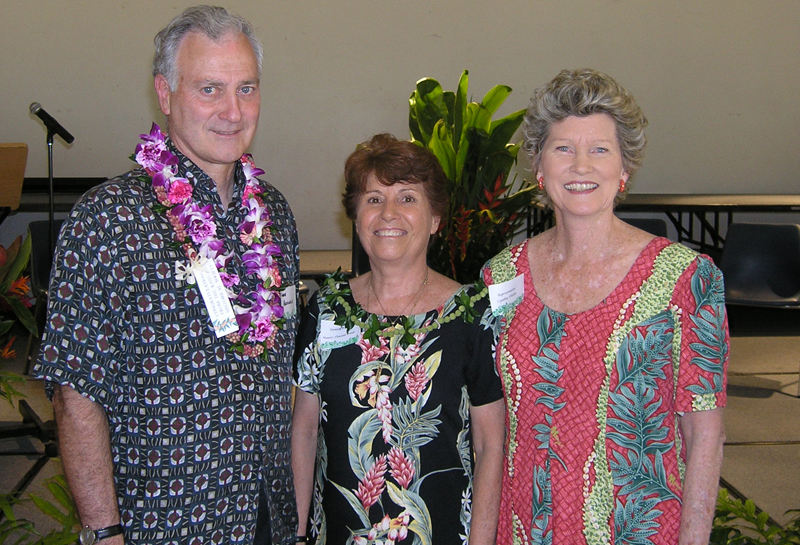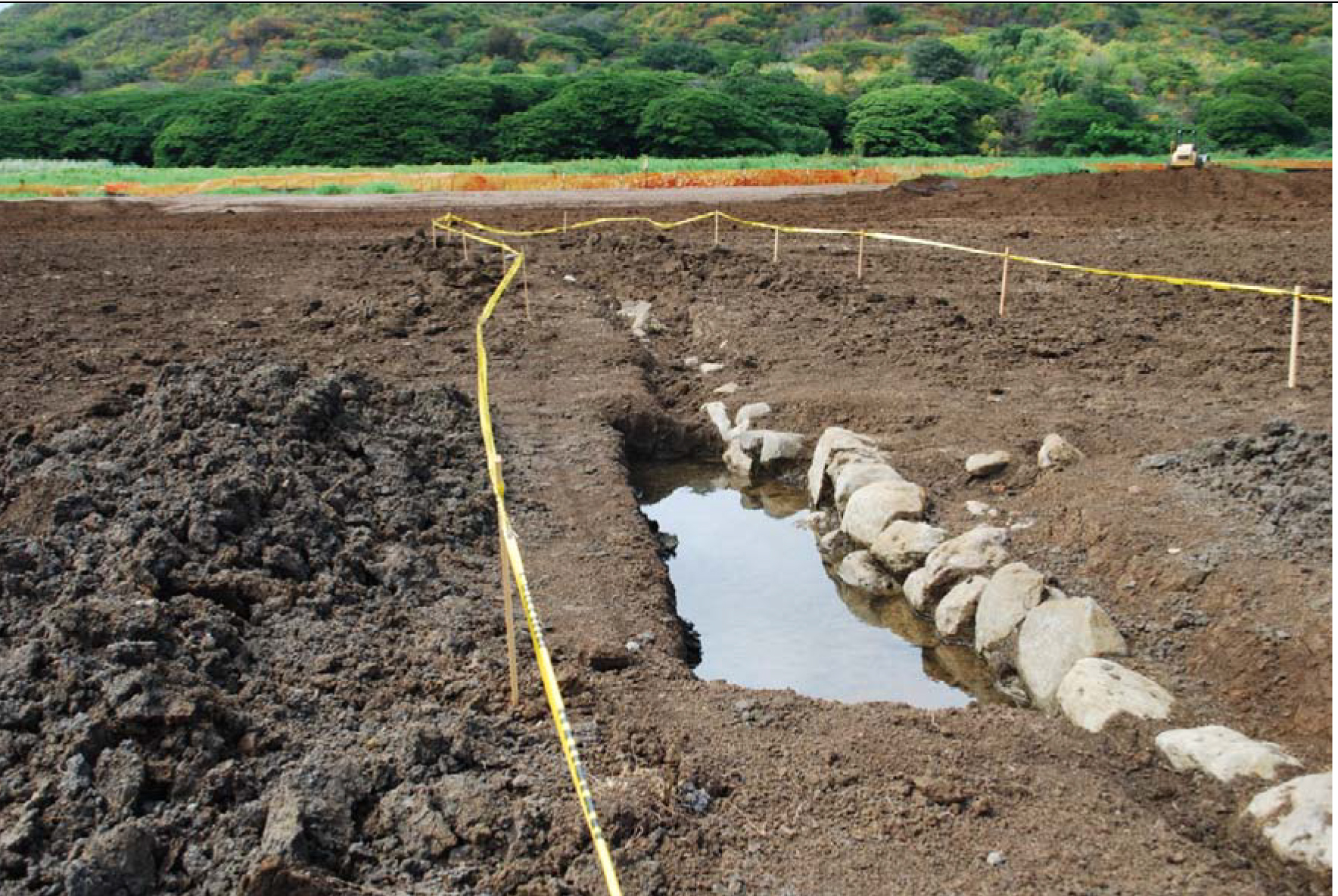|
Since our founding in 1980, we have worked for the protection of the Kawainui Marsh and it has remained one of our core issues. Over the years, HTF has fought to protect the integrity of this cultural, archaeological, and historic district; prevent harmful development in and around the marsh; and sought proper management, protections and recognition. With the Ramsar designation in 2005 as a Wetland of International Importance, Kawainui has finally gained the county, state and worldwide recognition befitting this culturally-significant marsh that is home to many endangered native waterbirds.
|
Wetlands of International Importance

On April 24, 2005, the official Ramsar Certification of Kawai Nui and Hamakua Marshlands as “Wetlands of International Importance” was presented by Mr. Herb Raffael, Chief, U.S. Fish and Wildlife International Conservation Division. The Ramsar designation was announced on World Wetlands Day, February 2nd, 2005.
The United States is one of 144 member nations of the Ramsar Convention, adopted in 1971, the only international agreement solely dedicated to worldwide protection of wetland ecosystems. With Kawai Nui’s designation, the first in Hawai’i, U. S. sites now number 22 totaling more than 3 million acres.
The first Convention on Wetlands of International Importance was held in Ramsar Iran in 1971 and is the first of the modern global intergovernmental treaties on conservation and wise use of natural resources. The Convention has 118 contracting Parties with more than 1000 wetlands designated for inclusion in the list of
This designation was first sought for the complex by Hawaii’s Thousand Friends (HTF) in 2002, aided by Eric Gilman of National Audubon Society. HTF has worked for the protection and enhancement of Hawaii’s largest and most significant wetland complex for over 20 years.
In addition, HTF was joined by a host of varied local and statewide organizations, including The Outdoor Circle, the Kailua Hawaiian Civic Club, the Hawaii Federation of Garden Clubs, the Kailua Neighborhood Board, Ahahui Malama I Ka Lokahi, Les Jardin Windward O`ahu Academy, the Pohai Nani Good Samaritan Retirement Community, the Kailua Historical Society, Waihona `Aina Corporation, and others. The designation request was also endorsed by Honolulu’s City Council, the State’s Office of Hawaiian Affairs and Governor Linda Lingle, who added the prestige of her office by submitting the application to U.S. Fish and Wildlife Service’ International Division.
Congressman Ed Case also wrote to the U.S. Fish and Wildlife Service in June 2004 endorsing the designation. Case later said, “I am thrilled that the importance of the Kawai Nui and Hamakua marshes have received this international recognition under the Ramsar Convention. This is a potent example of the impact that dedicated community-based organizations can have in protecting our environment and preserving endangered species and their habitat.”
Muriel Seto, HTF Culture Chair noted, “It is our great hope that this international designation will elevate the stature of the former Kawai Nui Hawaiian Fishpond and agricultural complex in the minds of local and state planners to the benefit of its aquatic and avian habitats. Greater sensitivity for its cultural and natural attributes would go far toward fulfilling at least 40 years of citizen efforts to reverse earlier detrimental decisions by policy makers.”
The United States is one of 144 member nations of the Ramsar Convention, adopted in 1971, the only international agreement solely dedicated to worldwide protection of wetland ecosystems. With Kawai Nui’s designation, the first in Hawai’i, U. S. sites now number 22 totaling more than 3 million acres.
The first Convention on Wetlands of International Importance was held in Ramsar Iran in 1971 and is the first of the modern global intergovernmental treaties on conservation and wise use of natural resources. The Convention has 118 contracting Parties with more than 1000 wetlands designated for inclusion in the list of
This designation was first sought for the complex by Hawaii’s Thousand Friends (HTF) in 2002, aided by Eric Gilman of National Audubon Society. HTF has worked for the protection and enhancement of Hawaii’s largest and most significant wetland complex for over 20 years.
In addition, HTF was joined by a host of varied local and statewide organizations, including The Outdoor Circle, the Kailua Hawaiian Civic Club, the Hawaii Federation of Garden Clubs, the Kailua Neighborhood Board, Ahahui Malama I Ka Lokahi, Les Jardin Windward O`ahu Academy, the Pohai Nani Good Samaritan Retirement Community, the Kailua Historical Society, Waihona `Aina Corporation, and others. The designation request was also endorsed by Honolulu’s City Council, the State’s Office of Hawaiian Affairs and Governor Linda Lingle, who added the prestige of her office by submitting the application to U.S. Fish and Wildlife Service’ International Division.
Congressman Ed Case also wrote to the U.S. Fish and Wildlife Service in June 2004 endorsing the designation. Case later said, “I am thrilled that the importance of the Kawai Nui and Hamakua marshes have received this international recognition under the Ramsar Convention. This is a potent example of the impact that dedicated community-based organizations can have in protecting our environment and preserving endangered species and their habitat.”
Muriel Seto, HTF Culture Chair noted, “It is our great hope that this international designation will elevate the stature of the former Kawai Nui Hawaiian Fishpond and agricultural complex in the minds of local and state planners to the benefit of its aquatic and avian habitats. Greater sensitivity for its cultural and natural attributes would go far toward fulfilling at least 40 years of citizen efforts to reverse earlier detrimental decisions by policy makers.”
Hawaii's Endangered Waterbirds
Kawaihui marsh provides a habitat for four endangered waterbirds.
Kawainui Marsh Restoration Project
Historic rock walls were uncovered in the restoration. (See images and area 7 maps below)
Maps below from the Bishop Museum.











